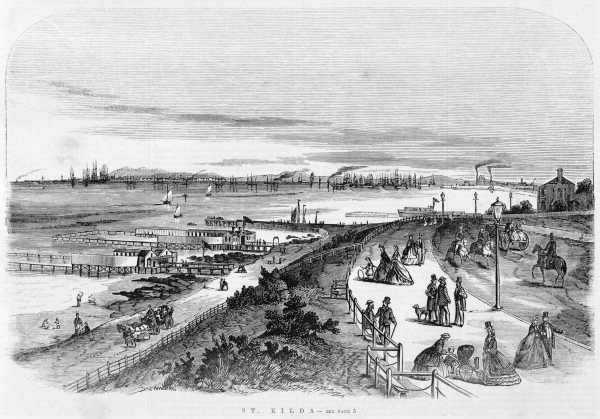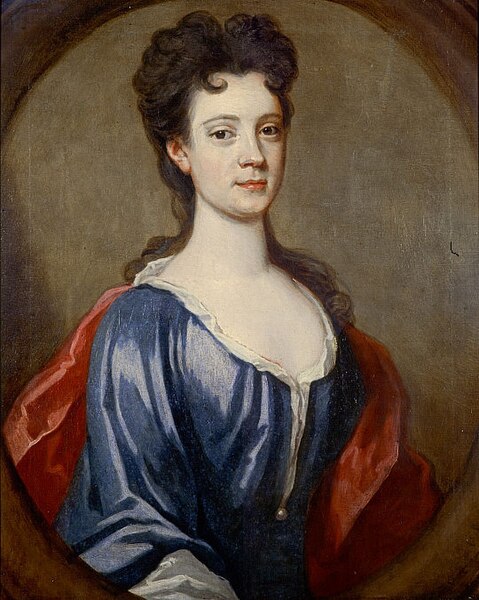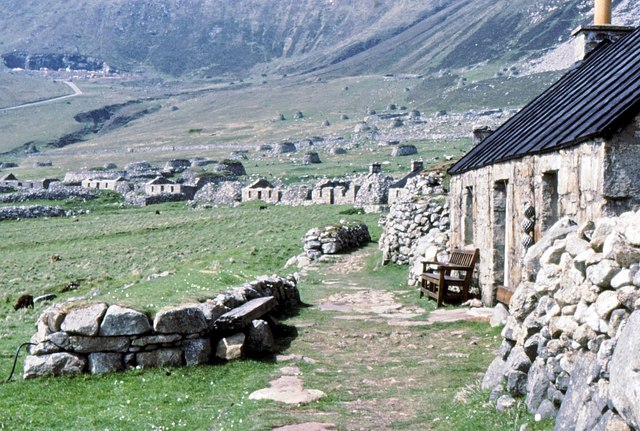The cab driver was fairly chatty, which is not unusual. We talked about this and that as he drove me home; and by 'we talked' I mean he jabbered away at me at high speed about every random subject imaginable while I stared out the window and went 'Hmmm...'. At one point, he noted that he lived in St Kilda and that it was a pretty neat place. And then:
'I wonder who Saint Kilda was?'
He asked, before saying 'anyway...' and moving on to tell me about his sister and his aunt and his dog and the first car that he bought when he was teenager.
But his previous question piqued my interest. Who, in fact, was Saint Kilda? And how did they get their name attached to a suburb of Melbourne? Not being a religious person, it didn't shock me that I wasn't familiar with the saint's name, but I was curious enough to look it up online when I get home.
And this was the moment that I started to read about the history of the city I now call home.
It turns out that the short answer to my cabby friend's question is a very simple one: There is no Saint named Kilda, and there never was one. The suburb isn't named after a religious figure at all. The actual answer as to where this name came from is more complicated, and represents a fascinating journey in time and space.
The indigenous Yalukit-William tribe from the Kulin Nation were the traditional owners of the land that became St Kilda, and they referred to the area as Euroe Yroke. European settlers began to arrive in the latter part of the 1830's, mostly pastoralists looking for new farm land, and they largely settled on the banks of the Yarra river.
But some farmers spread out south of the fledgling settlement, the first leaseholds being taken in the St Kilda area in 1839, when it was referred to simply as 'Green Knoll.' In 1842, as the city expanded, 22 allotments of land were officially surveyed and offered for sale by the local authorities, this new formalised settlement to be called 'The Village of Fareham' (after a village in Hampshire where some of the new residents hailed from).
But the previous year, a large trading ship had arrived in Melbourne and had anchored south of the city, directly adjacent to the proposed site of the new village. The name of this vessel; 'The Lady of St Kilda.' The ship anchored in Melbourne for some months and dominated the largely undeveloped shoreline to such an extent that the area was soon referred to locally as 'The St Kilda foreshore.'
 |
| The Lady of St Kilda, at anchor. |
 |
| The Lady of St Kilda depicted on a contemporary rail bridge. |
The first purchaser was James Ross Lawrence, who had been the master mate on the Lady of St Kilda. Allowed to name the street that fronted his block of land, Lawrence chose Acland Street, after Sir Thomas Acland, the ship's original owner.
 |
| St Kilda in 1864, shortly after its founding. |
So if the suburb is named after a boat, where then did this craft take it's name from?
The Lady of St Kilda was a schooner, built in Devon in 1834 for Acland and used by him as part of his trading business (initially bringing fruit from the Mediterranean to England). Acland named the ship after a visit his wife Lydia had paid the St Kilda archipelago, part of the Outer Hebrides Islands off the coast of Scotland, for a holiday in 1810.
Although the lady of the ship's name is not Lydia herself but Lady Grange, a famous prisoner once kept on Hirta, the main island of the St Kilda group.
Lady Grange was the wife of James Erskine, a wealthy 18th century Scottish lord and barrister. In 1732, the good lady discovered papers that showed her husband was involved in a plot to overthrow the British monarchy. The plot was part of an ultimately failed coup attempt designed to install Scottish heir Bonnie Prince Billy on the British throne. Outraged by this treasonous behaviour, Lady Grange immediately determined to reveal her husband's activities. But Erskine was alerted to his wife's maneuver and struck first.
 |
| Rachael Chiesley, AKA Lady Grange |
Lady Grange was abducted at her husband's order and taken initially to an isolated castle that he owned in northern Scotland. She was then interred in a private mental hospital before being moved to the St Kilda islands around 1735. Now imprisoned in one of the most isolated inhabited spots on Earth, the noblewoman endured years of degrading treatment; living alone in a stone dwelling with an earthen floor, among a small local population who spoke no English, suffering poor health due to the island's harsh climate and lifestyle.
 |
| Barren, windswept, primitive; a village street on Hirta |
Acland then, had had his attention brought to St Kilda by his wife's visit, and had named his ship as tribute to this long suffering British patriot.
But what of the islands themselves? Where did they take their name from? What is the root of the name 'St Kilda'?
While opinions differ, the most widely accepted theory has this as a simple translation error. The first settlers of the islands were Norse, and some histories show the name of the islands recorded as Skildir, an old Norse word meaning 'shield.' This has been mis-recorded on a Dutch map from 1583, which has the name as Skildar. These same charts were revised and updated by the Dutch Government in 1592, Skildar now being misrecorded as S.Kilda. This type of error was common at the time, due to human error and the primitive means available for recording printed information.
As the Dutch were among the foremost seafarers of this time period, and among the furthest travelled, many other countries would base their own official charts on those of the Dutch. British chart makers who used this 1592 map as the basis for their own work, simply assumed that S.Kilda was a shorthand way of recording St Kilda, and recorded it as such themselves.
And so a previously unrecorded Saint was summoned into existance, which 250 years later would find it's way into the name of one of Melbourne's beachside suburbs. The last of Hirta's population left the islands in 1930, the St Kilda islands are now a UNESCO listed World Heritage Site.



Thank you for this information!
ReplyDeleteThanks so much. I am going to St Kilda islands next month !! I was born and grew up in St Kilda Melbourne and have always wanted to visit this fascinating part of the world.
DeleteI too grew up in St Kilda, and have followed the Saints since 3 years old. Only bit the bullet yesterday to get a digital/Kayo membership. If it works, I don't think I'll regret it.
DeleteMy grandma grew up near Acland Street, in fact it was right around the corner from where she lived and I would go to the newsagent's there for her at times. She loved walking around there and the scenery.
I miss the place, but last time I went there, I forgot how polluted Melbourne actually is.
Great read! Thanks
ReplyDeleteGreat post. Really sums everything up and reads beautifully, no matter what your level of interest in local history. Now to see what other gems sit nearby...
ReplyDeleteWell written and enjoyable historical information. Ty?
ReplyDeleteReally well written, and very interesting history of the naming of our beachside suburb.
ReplyDeleteI'm also curious as to why this article has attracted so much attention over the past month. Most of the comments have been written in April and May of 2016. The article was written in 2013. I arrived here after googling information on the old Prince's Bridge railway station in Flinders street
ReplyDeleteFascinating, I have been reading Kerry Greenwood Phryne Fisher Mysteries and wanted to know more about St. Kilda. Thank you.
ReplyDeleteFascinating, I have been reading Kerry Greenwood Phryne Fisher Mysteries and wanted to know more about St. Kilda. Thank you.
ReplyDeleteInterestingly 36 St Kildans immigrated to Melbourne in 1853 on the Priscilla. Only 17 survived and no more St Kildans would immigrate to far flung destinations again.
ReplyDeleteYes my GGGrandfather came out from aisle St Kilda in 1830 with his wife who died on way out. We have done some work on him and have found that my Grandfathers, my mothers and my own strange big toe is in fact passed down from him... they were known to have evolved a ‘claw toe’ that came about from 2,000 years of cliff climbing for bird eggs. Something our family laughs about to this day
DeleteFor a while I lived in St. Kilda Road in Cape Town. I accepted that the Name comes from any strange Kind of celtic Saint in the time before king Arthur. I found my theory so brilliant that now I am a little sad about the truth.
ReplyDeleteThankyou appreciate your diligence right to the last detail. Curiosity definitely satisfied!!
ReplyDeleteOur family lived in StKilda since its' earliest days until 1985 when my Dad died. He told me of bushrangers in StKilda Road which I found it hard to believe, but he was right. I am an Honorary member of the StKilda Historical Society and have lived in Perth WA since 1971.
ReplyDeleteI visited the island of StKilda in 1963 when it had a small army presence and presented the two-volume history of its Aussie namesake to the local library (yes, there was one then). Also visited the beautiful town of Perth in Scotland the same year. Well done with your research!
Gayle Potter - Greenmount WA
Thanks for the origins of the name "St. Kilda" - which became important to a story I wrote... I will strive to update my blog to give you credit. Please see, if interested... https://talesofcornwall.blogspot.com/2022/08/on-saving-b-f-hean.html
ReplyDeleteThe complete story, which features a bit of Melbourne in Part 2 can be found here: https://lebtown.com/2022/07/26/who-knew-on-being-b-f-hean-part-one/
Delete